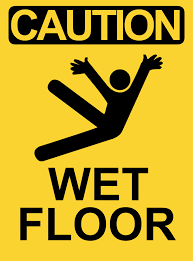 Yes, you do – for a couple of reasons. The first is that hydration pressure from the evaporation of water during the concrete curing process can still be a problem, depending on curing conditions, amount of excess water used in the concrete mix, and cure time of the slab. Best to measure this rate of moisture evaporation with a plastic sheet test to determine the time it takes for moisture to form on the underside. If this time is shorter than the tack free time for our primer (about 6 hours for Primer LVFC at 70°F), then you must wait before applying the material.
Yes, you do – for a couple of reasons. The first is that hydration pressure from the evaporation of water during the concrete curing process can still be a problem, depending on curing conditions, amount of excess water used in the concrete mix, and cure time of the slab. Best to measure this rate of moisture evaporation with a plastic sheet test to determine the time it takes for moisture to form on the underside. If this time is shorter than the tack free time for our primer (about 6 hours for Primer LVFC at 70°F), then you must wait before applying the material.
While the presence of the vapor barrier should prevent any subsurface moisture pressure from adversely affecting the coating, it is still a good idea to run calcium chloride tests to provide an extra measure of insurance, as problems can result from the barrier being penetrated during the installation of the concrete. This is especially a problem if a thin (6 mils) film is used. We recommend a minimum 10 mil or greater, reinforced vapor barrier be used to guard against this ripping of the film during installation. The other reason for running calcium chloride tests is in cases where the barrier is placed below sand and gravel, rather than directly under the slab, as entrapped moisture in the sand could result in a high enough water content to cause delamination of the coating. Note that for our ¼” trowelled systems, we recommend a maximum allowable water content of 10 pounds, and 5 pounds or less for “thin film” applications.
